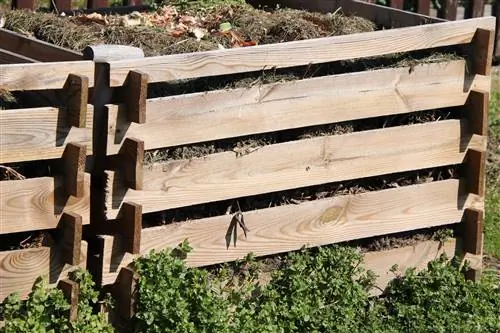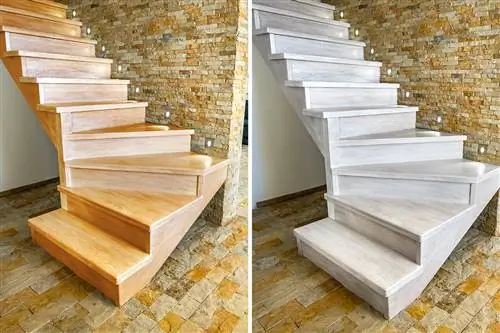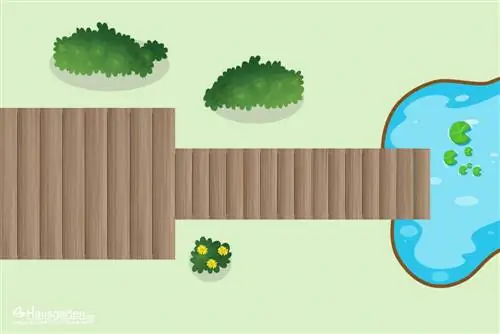- Author admin [email protected].
- Public 2023-12-17 03:39.
- Last modified 2025-01-24 12:45.
In a compost silo, compost is created simply by the decomposition of garden waste. This means that every garden owner gets valuable humus that has rich nutrients and can be used in a variety of ways. In addition, it costs nothing to produce. All you have to do is purchase a compost silo. And this costs from around 50 euros upwards, depending on the size and material.
Location and filling of a compost silo
The space in the garden for a compost silo should be well chosen and generally easily accessible. The compost silo should not be visible, and you should also consider the views of neighbors when setting up the compost silo. It is often advisable to coordinate with your neighbors in advance of the installation. A shady place is ideal for setting up the compost silo.
All garden waste can be ideally stored in a compost silo for the decomposition process. Wild herbs should only be added if they have not yet set seeds. Otherwise, the resulting compost will spread all the weeds all over the garden. Garden waste should only go into the compost if it is not infected with a disease. The diseases would then also spread throughout the garden. The compost must be loosely piled up inside. Constant moisture can then cause microorganisms and earthworms to decompose the material. In order to achieve good compost soil, the compost should be turned into the compost silo once or twice a year. This mixes it, enriches it with oxygen and loosens everything up again. You can also purchase compost starter from specialist retailers. These rapid composters usually contain pure cultures of aerobic microorganisms that are able to start the rotting process immediately.
Tips for using a compost silo
It is also recommended that if you want to prevent harmful acid formation, carbonated lime can be added to the compost. The lime binds acids. The mixing ratio is 1-3 kilograms of lime per cubic meter of compost material. If you want to bind acids and accelerate the decomposition of the compost at the same time, use lime nitrogen in the same mixing ratio. Other materials can also be used: manure, horn meal or guano. The same effect can be achieved using nitrogen-rich garden waste. Nettle cuttings or tomato cuttings have an excellent effect for this purpose.






